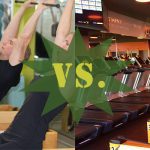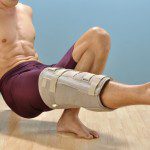When it comes to balance and our bodies, there is so much that we take for granted. The more we research and learn about how our nervous system interacts with our muscles and overall health, we come to realize how important it is to stay healthy and in shape, both muscularly and cognitively. Our muscles and senses are connected to our vestibular system, which means that it is one of the most important systems to properly maintain. As we age, we tend to move less, which causes the vestibular system to not be exercised as much and diminishes our ability to control and balance our bodies. This is where Pilates can directly affect our everyday lives.
Health Concerns with Balance Issues
As kids, we tend to throw caution to the wind as we play, running and jumping as though nothing could ever knock us down. The older we get, we notice that the balance we once had doesn’t seem to be as precise. Naturally, aging affects our bodies in many ways, balance being one of them. However, there are other issues that can arise from daily activities and bodily traumas that we take for granted. A simple ear infection, or an accidental fall during a game of tag, or even medications taken for other illnesses can cause a vestibular disorder. A case of the measles or chickenpox can cause vestibular neuritis. On a more extreme scale, tumors or hypothyroidism can also cause vestibular disorders. Symptoms of a vestibular disorder can include sudden dizziness with nausea, vomiting, and trouble walking, all supporting the fact that balancing is now very difficult.
Ways to Combat Vestibular Disorders
There are various way to combat vestibular disorders, which include vestibular rehabilitation therapy, dietary adjustments, medications, and even surgery. However, the simplest may also be one of the most effective: Home-Based Exercises. Think low impact aerobics and Tai Chi, both things anyone at home can do, even with minimal equipment or know-how. Adding some simple Pilates exercises can increase results, and we’ve listed some that can be accomplished at home or at a studio below.
Why Pilates?
As we’ve noted in previous blogs, Pilates works to improve stability and increase overall balance, promoting mindfulness throughout the entire form while encouraging awareness and presence in each posture and movement. The focus on such precise movements and the entire center of the body allows for greater core stability, and eventually, better balance. For those rehabbing an injury or within an elderly population, Pilates can be the perfect choice to regain that sense of normalcy once a foregone thought.
If you are dealing with a vestibular disorder or if you are just interested in starting your Pilates journey, contact Dynamic Fitness today to see how we can help!
Pilates Exercises to Consider for Vestibular Disorders
PLEASE NOTE: We are not physicians, so be sure to consult your doctor before starting any exercise program.
Click on any exercise to view a short video.
Various splits on the Reformer
Exercise 1 – Front Splits
Exercise 2 – Russian Splits
Exercise 3 – Side Splits
On the Pedi-pole
Exercise 4 – Pedi Pole (no video – see blog cover photo)
Exercise 5 – Plié on the Pedi Pole
Via Small Chair
Exercise 6 – The Wundra Chair
Via High Chair
Exercise 7 – The High Chair



